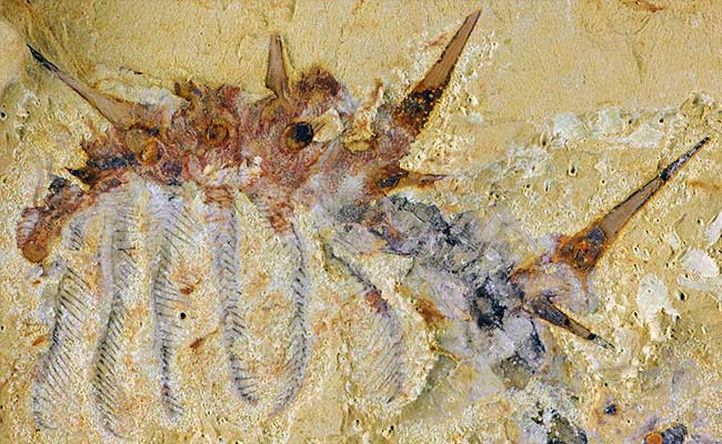What Are Exoplanets And How NASA Detects Life Beyond Our Solar System
Bharti Airtel Set To Acquire Telenor India Within This Year
Google Celebrates NASA’s Discovery Of Seven Earth-Like Planets With An Animated Doodle
Some Home Remedies That Might Sound Bizarre But Actually Work Like A Charm
Akshay Kumar Feels He Has Made Enough Money, Now Wants To Focus On Content & Characters
Delhi ATM Dispenses Fake Rs 2000 Notes From ‘Childrens Bank of India’ With ‘Churan Lable’
Adolf Hitler’s Personal Telephone During World War II Is Up For Auction In The US
From Salman Khan To Rekha, Neil Nitin Mukesh’s Wedding Reception Was Quite A Starry Affair
Scientists Discover Spiky Little Sea Monster Fossils Half A Billion Years Old
More than half a billion years ago, a peculiar little creature with rows of spikes on its back and delicate, feather-like front limbs to strain bits of food from the water, thrived in the primordial seas of what is now China. Scientists on Monday, June 29, announced the discovery in Yunnan Province of beautifully preserved fossils of one of the stranger animals ever to call Earth home. The creature, Collinsium ciliosum, lived during the Cambrian Period, a time of remarkable evolutionary experimentation when many unusual animals appeared and vanished. "Collinsium is definitely an odd-looking animal, and if one were to bump into one of these during a snorkeling or diving trip nowadays it would be quite shocking," said University of Cambridge paleobiologist Javier Ortega-Hernández, whose research appears in the Proceedings of the National Academy of Sciences. Despite its startling appearance, some people "may like it and regard it as a 'handsome beast,'" added palaeontologist Xi-Guang Zhang of Yunnan University in Kunming, China. Its name means "hairy Collins monster," recognising its bizarre appearance and the coat of hair-like structures on the front of the animal while honouring Canadian palaeontologist Desmond Collins, who decades ago conceptualised a similar creature. Ortega-Hernández said Collinsium, which lived about 515-518 million years ago, is a distant ancestor of today's velvet worms, a group resembling legged worms residing in the world's tropical forests. Collinsium, reaching up to 4 inches (10 cm) long, boasted 72 sharp spikes on its back to ward off predators. It was one of the earliest soft-bodied animals with armour. It had a sausage-shaped body, six pairs of feather-like front legs, nine pairs of rear legs with claws, a bulbous head and downward-facing mouth. It got its dinner by extending its feathery front legs to form feeding basket to capture food particles. Collinsium was a close cousin of another spiky Cambrian creature called Hallucinogenic. University of Cambridge palaeontologist Martin Smith, whose study offering the most detailed account ever of Hallucinogenic was published last week in the journal Nature, said even oddballs like Hallucinogenic and Collinsium would have plenty of competition in a "Cambrian weirdest creature contest." "Their compatriots included beasts such as Wiwaxia, a slug covered in leaf-like scales and towering spines; Anomalocaris, resembling a cross between a lobster and a can-opener; Nectocaris, a boggle-eyed two-armed squid, and Opabinia, which looks like a shrimp that swallowed a vacuum cleaner," Smith said. A fossil of Collinsium ciliosum, a Collins' monster-type lobopodian found in the early Cambrian Xiaoshiba deposit of southern China, is seen in a picture provided by Jie Yang. Reuters Photo





